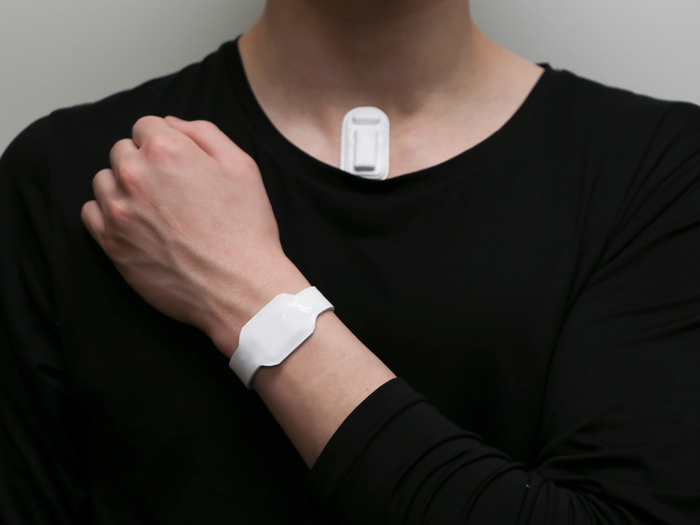Researchers at Northwestern University have developed a wearable that can detect when someone is talking or singing, and tallies this information up to provide a warning when the wearer might be at risk of vocal fatigue. Overusing your voice in a short space of time can lead to vocal fatigue and even injury. This technology is useful for patients with vocal disorders, but also for people who rely on their voices a lot, such as singers, politicians, and teachers. The device communicates with a smartphone app to keep track of voice use. The researchers are also developing a system whereby a user can indicate in the app if they feel like they are approaching vocal fatigue, and the system will remember this as a personal ‘vocal budget’ and then warn the user ahead of time if they are getting close to such levels of voice use in the future.
Many of us take our vocal cords for granted, but those who use their voices professionally know that overuse can lead to vocal injury. Similarly, those with vocal disorders or an existing vocal injury may need to ration their speech to avoid exacerbating the issue. However, with a busy life it can be difficult to keep track of how much you are using your voice, and before you know it you could find yourself struggling to speak (or sing).
Researchers have thought of this previously, and some have designed devices to help track voice use. However, many such pre-existing devices have drawbacks. For instance, microphone-based technologies come with privacy concerns while other solutions have involved tethered wires or bulky equipment, which isn’t ideal.

This latest device is an unobtrusive wearable that sits on the chest and senses vibrations that are caused by speaking or singing and transmits these data via Bluetooth to a smartphone app. “The device precisely measures the amplitude and frequency for speaking and singing,” said John Rogers, one of the leaders that developed the new monitor. “Those two parameters are most important in determining the overall load that’s occurring on the vocal folds. Being aware of those parameters, both at a given instant and cumulatively over time, is essential for managing healthy patterns of vocalization.”
By setting personal thresholds, the technology allows wearers to receive a haptic signal when they are getting near to fatigue their voice, creating an opportunity to rest the voice for a while. “It’s easy for people to forget how much they use their voice,” said Theresa Brancaccio, another researcher involved in the study. “Seasoned classical singers tend to be more aware of their vocal usage because they have lived and learned. But some people — especially singers with less training or people, like teachers, politicians and sports coaches, who must speak a lot for their jobs — often don’t realize how much they are pushing it. We want to give them greater awareness to help prevent injury.”
Here’s a Northwestern University video about the technology:
Study in journal PNAS: Closed-loop network of skin-interfaced wireless devices for quantifying vocal fatigue and providing user feedback
Flashbacks: Neck Sensor Helps Masked Clinicians Communicate; Flexible Throat Sensor Powered by AI to Track COVID-19 Symptoms
